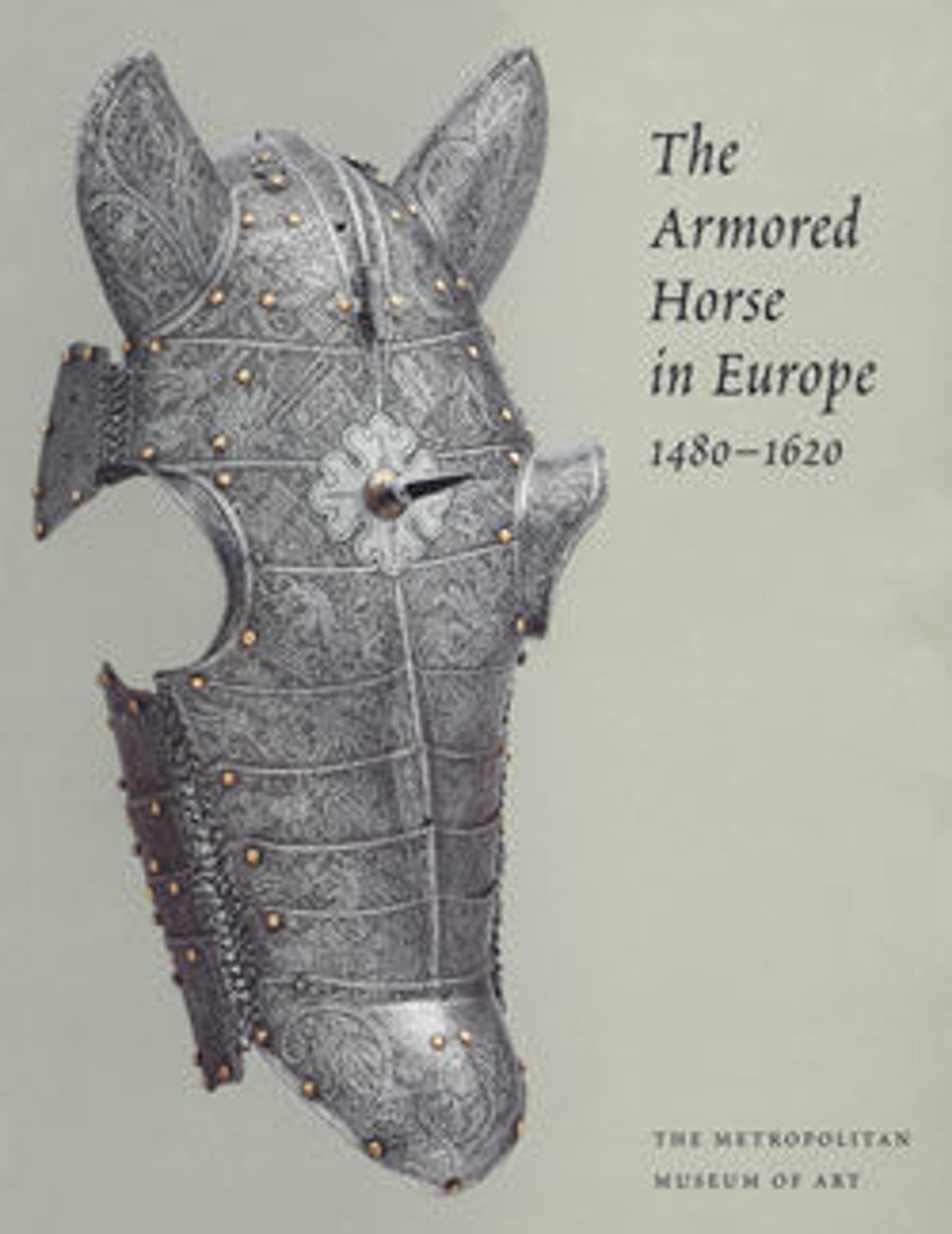Three Pommel Plates of a Saddle
The three-piece construction of this set of pommel plates was standard across western Europe throughout the sixteenth century. A central plate covering the area of the pommel itself is flanked by two plates extending downward at a ninety-degree angle that serve both to cover the flanges of the saddle bow and to protect the front of the rider's thighs. During conservation two minute traces of mercury gilding were found around the rivet holes on the pommel plate and one sideplate, indicating that the steels were originally decorated to some extent with gilding.
Although armored saddles must have been faily common for heavy cavalry by the late fifteenth century, surviving saddle steels dating earlier than about 1525 are surprisingly rare. A date of about 1510 to 1520 is suggested for this set because of the exceedingly bold form of the roped borders, found at the top of the pommel and the bottom edges of the sideplates, and the fluted decoration, consisting of pairs of shallow, concave diagonal grooves on the sideplates. The stylistic features indicative of an early date are the loose and open diagonal twist of the roped borders, as well as the concave nature of the paired flutes and the plain areas of smooth steel between them. These are also characteristic of the period from about 1510 to 1520, the first decade in which roping and fluting were combined in this way to decorate German armor.
Although armored saddles must have been faily common for heavy cavalry by the late fifteenth century, surviving saddle steels dating earlier than about 1525 are surprisingly rare. A date of about 1510 to 1520 is suggested for this set because of the exceedingly bold form of the roped borders, found at the top of the pommel and the bottom edges of the sideplates, and the fluted decoration, consisting of pairs of shallow, concave diagonal grooves on the sideplates. The stylistic features indicative of an early date are the loose and open diagonal twist of the roped borders, as well as the concave nature of the paired flutes and the plain areas of smooth steel between them. These are also characteristic of the period from about 1510 to 1520, the first decade in which roping and fluting were combined in this way to decorate German armor.
Artwork Details
- Title: Three Pommel Plates of a Saddle
- Date: ca. 1510–20
- Culture: German
- Medium: Steel, gold
- Dimensions: Center: 13¾ x 6¾ in. (34.9 x 17.1 cm); Right: 16 x 6½ in. (40.6 x 16.5 cm); Left: 16 x 6¾ in. (40.6 x 17.1 cm); W. 2 lb. 15 oz. (1329 g). Assembled: H. 7 in. (17.8 cm); W. 28 in. (71.1 cm).
- Classification: Equestrian Equipment-Saddles
- Credit Line: Bashford Dean Memorial Collection, Funds from various donors, 1929
- Object Number: 29.158.623
- Curatorial Department: Arms and Armor
More Artwork
Research Resources
The Met provides unparalleled resources for research and welcomes an international community of students and scholars. The Met's Open Access API is where creators and researchers can connect to the The Met collection. Open Access data and public domain images are available for unrestricted commercial and noncommercial use without permission or fee.
To request images under copyright and other restrictions, please use this Image Request form.
Feedback
We continue to research and examine historical and cultural context for objects in The Met collection. If you have comments or questions about this object record, please complete and submit this form. The Museum looks forward to receiving your comments.
